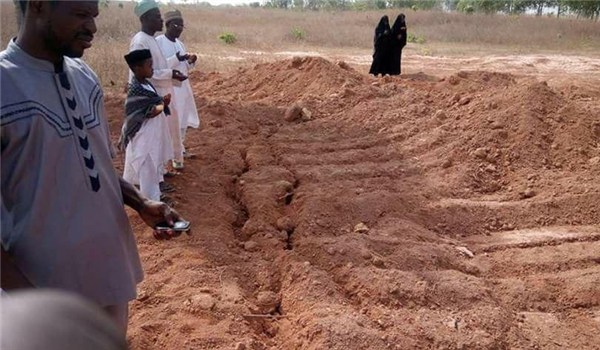NewsRescue
IHRC has called on the International Criminal Court to open a preliminary enquiry into the events in Zaria last year
The International Criminal Court is being urged to investigate the massacre of nearly 1000 civilians in Nigeria last December at the hands of the country’s armed forces.
The Islamic Human Rights Commission, IHRC has called on the international tribunal which has a mandate to prosecute people for war crimes, crimes against humanity and genocide, to open a preliminary enquiry into the events in Zaria last year in which soldiers attacked the Islamic Movement of Nigeria’s (IMN) supporters, symbols and property.
The assault over two days in the northern Nigerian city left a trail of bloodshed and destruction including the shooting of the movement’s leader Sheikh Ibrahim Zakzaky and his wife Zeenat. Both are currently believed to be in military custody, detained without charge.


In the filing submitted to the ICC today IHRC writes: “The crimes committed between the 12th and 14th December 2015 in Zaria, Kaduna State, by the Nigerian army amount to crimes against humanity. The crimes committed by the Nigerian army meet all the necessary legal requirements to warrant a preliminary investigation by the ICC prosecutor.”
Information obtained by IHRC indicates that 217 people were confirmed killed in the attacks, another 219 are in detention, and 482 are still missing. The number of injured is believed to run into many hundreds. IHRC’s filing to the ICC is largely based on eye-witness evidence of the army’s assault.

The majority of deaths were caused by gunshots fired by soldiers. Cases of people being burnt alive have also emerged. Injuries caused by machetes or other knife wounds have also been found on the corpses, and could be the work of the criminal groups that perpetrated acts of looting and mutilation alongside the military. Signs of torture and electrocution have been evidenced on the body of the IMN leader Sheikh Zakzaky and other detainees, two of whom died as a result thereof.
Sexual violence has also been reported, including cases of rape against women affiliates of the IMN. A 14-year old female witness told IHRC that the military shot her in her private parts when she resisted attempts by soldiers to rape her. Some women reportedly had their breasts cut off and others were deliberatelly shot in the pelvic region damaging their uteri.

Photographic evidence has been obtained along with testimonies of mass graves where the army is reported to have buried fatalities from the killing spree. Some corpses were allegedly incinerated, apparently in order to conceal any evidence.

In its submission IHRC says that the evidence suggests that the army’s assault was a systematic and pre-planned attempt to snuff out the IMN whose growing popularity have made it a thorn in the side of Nigerian governments. A similar army assault in July 2014 during a religious preocession led to the deaths of 34 IMN members including three sons of Sheikh Zakzaky who were apparently singled out for execution.
Eyewitnesses have reported that during December’s violence soldiers were seen celebrating and chanting slogans against the IMN, such as ‘we have finished with the Shia and Zakzaky’ and ‘no more Shias in Nigeria’. Although the IMN has support among Nigeria’s Sunnis and Shias it is often portrayed by its detractors as a Shia organisation.
During the violence soldiers used automatic weapons, explosives and armoured vehicles against unarmed civilians. This, along with the destruction of places of worship, graves and other buildings associated with the IMN, appears to support the contention that the attack was aimed at fatally damaging or eliminating the IMN.
Download for Whassap version here
Although the state government in Kaduna has set up a Judicial Commission of Inquiry IHRC believes it is insufficiently independent and impartial to be able to hold those responsible to account, nor is there any reasonable prospect of any prosecutions. In his speech announcing the inquiry state governor Malam Nasir el-Rufai listed a range of grievances against the IMN, which is indicative of bias against the IMN from the start. He was also responsible for demolishing IMN properties before setting up the commission of inquiry.
IHRC chair Massoud Shadjareh said: “The scale and brutality of this massacre and unwillingess of the Nigerian government to implement due process makes it essential for the international court to investigate. The faiure of the international community to act against atrocities on this scale stands to have grave consequences.”







